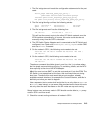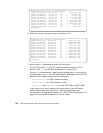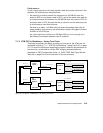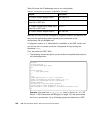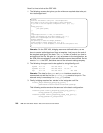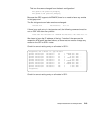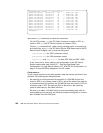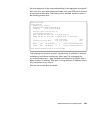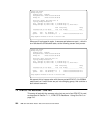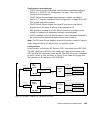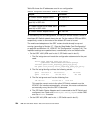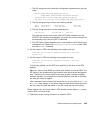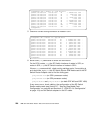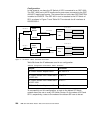
Multiple RS/6000 SPs and Multiple GRFs 221
So what happened to the expected doubling of the aggregate throughput?
As it turns out, even with bridging activated, only one ATM port is allowed
to send and receive data. The second port is blocked, as can be seen in
the following screen shot:
This bridging environment is useful, nevertheless. It provides an inherent
redundancy and failover mechanism. When port 0 is unplugged, the
up-to-then blocked port 1 gets activated and takes over the traffic with a
delay of about 10 seconds. With port 1 having the same IP address, this is
fully transparent to any clients.
See the next screen shot for details:
grf16:/root brstat
Bridge Group bg1
Spanning Tree: Enabled
Designated Root: 32768 00:c0:80:84:8c:eb
Bridge ID: 32768 00:c0:80:96:38:68
Root Port: ga010, Root Path Cost: 10
Topology Change Detected: No
Root Max Age: 20, Hello Time: 2, Forward Delay: 15
Bridge Max Age: 20, Hello Time: 2, Forward Delay: 15, Hold Time: 1
Path Desig Desig Desig
Interface Port ID Con State Cost Cost Bridge Port
--------- ------- --- ---------- ----- ----- ----------------------- -------
*ga010 128 1 Yes Forwarding 10 0 32768 00:c0:80:84:8c:eb 128 1
ga0180 128 2 Yes Blocking 10 0 32768 00:c0:80:84:8c:eb 128 2
Dump snapshot finished at Mon Jun 15 20:01:33 1998



